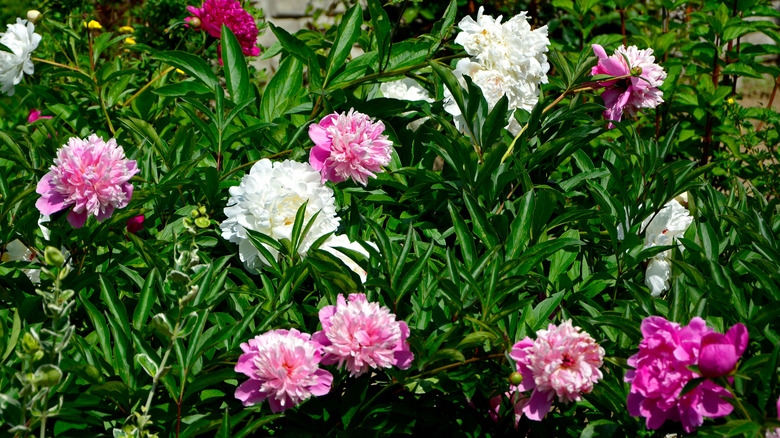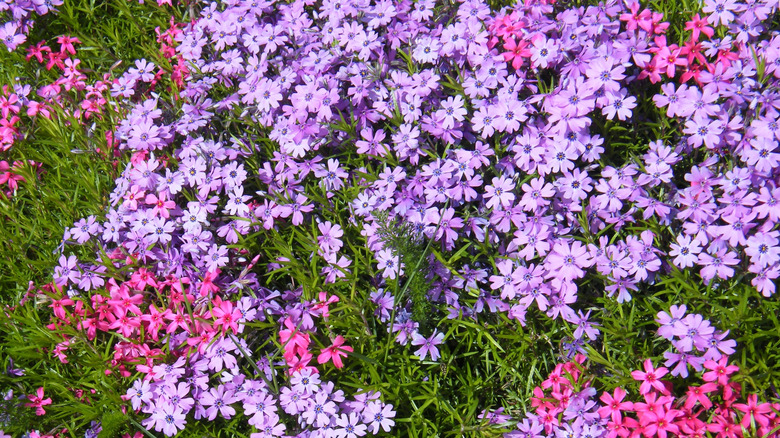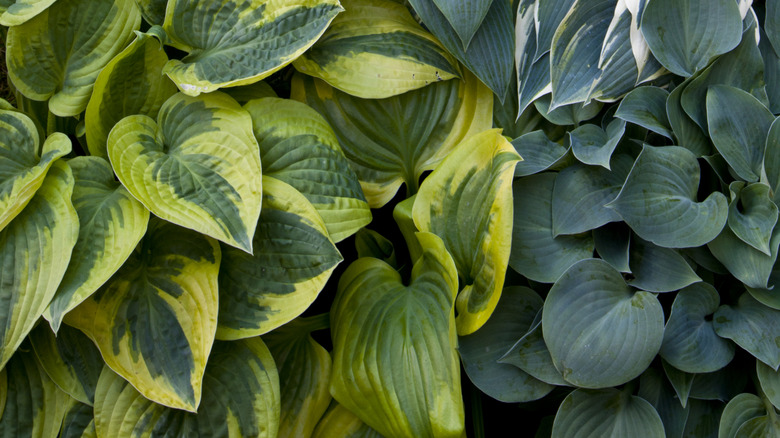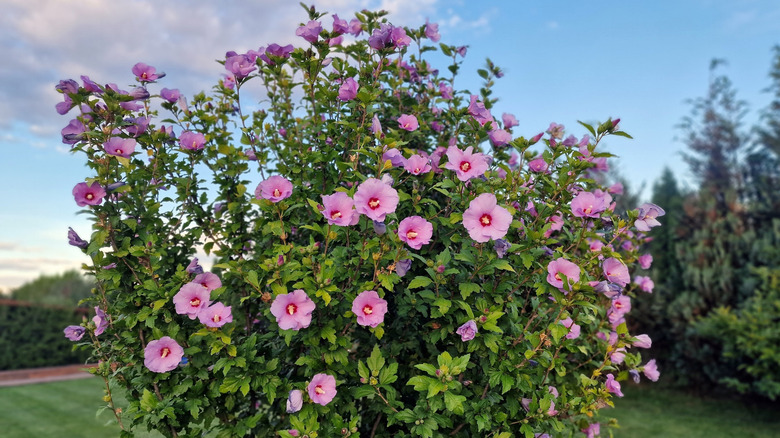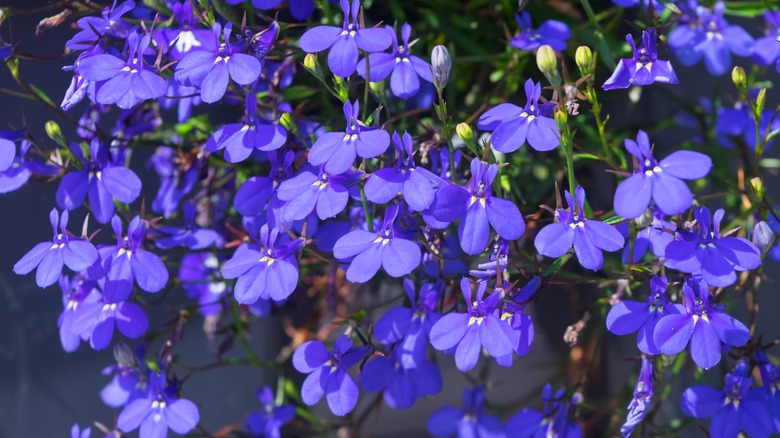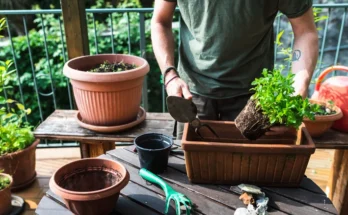Well known for their fragrant, star-shaped summer blooms, lilies (Lilium) are the perfect choice to cheer up any garden. However, when adding one of these stunning flowers to your floral display, it’s important to make sure you choose pairings that work with your lilies rather than against them. There are around 100 species in the Lilium genus, but several other plants — like the calla lily (Zantedeschia aethiopica) — aren’t true lilies, despite having “lily” in their common name. True lilies emerge from scaly bulbs, unlike many lily lookalikes that grow from fleshy roots, rhizomes, or corms.
These flowers look beautiful in mixed beds, but not every species makes a good neighbor. To prevent incompatibility issues, choose plants that prefer fertile, loamy, well-drained soil and regular watering. Since most lilies grow best in USDA hardiness zones 3–8, it’s also important to select species that can handle the same climate. Additionally, you’ll want to consider the other plant’s mature size, growth habit, and root structure to prevent competition or stress to your lilies. The best companion plants won’t just look beautiful next to your lilies, they’ll happily coexist to make your gardening job easier, not harder.
Grow peonies with lilies for stunning staggered blooms
Peonies (Paeonia spp.) and lilies are a dream team when grown together in the garden. The two of them thrive in full sun, like well-drained soil, and appreciate regular watering as they establish roots. However, care requirements aren’t the only consideration you’ll need to make when finding a companion plant for your lilies; it’s also important to choose plants with root systems that get along well. Short-rooted species like peonies are a great match for deep-rooted lilies because they absorb nutrients from different areas of the soil, preventing competition. Additionally, lilies love having shaded roots, and shallow-rooted companions like peonies help keep the soil cool around the bulbs.
While it’s necessary to choose neighbors that get along well as they grow, you also want species that keep your garden colorful and dynamic. Lilies are usually summer bloomers, while peonies emerge in late spring to early summer, so you can enjoy months of continuous flowering. This stunning duo doesn’t just offer multi-seasonal blooms, but the plants also contrast beautifully when planted together. Growing up to 3 feet tall, peonies provide the perfect bushy backdrop for the tall, slender lily stems. So, even when the peonies’ blooming period comes to an end, their foliage sticks around to provide some additional visual interest.
Avoid planting fast-spreading ground covers near lilies
Although swapping out grass for ground covers has its benefits in some yards, it’s not always the best idea if you’re growing lilies in the same area. Many lawn alternatives are fast-growing and have tough root systems that can help with issues like erosion, but they can also dominate your lilies’ space and outcompete them for nutrients. Additionally, if the root systems of both plants become intertwined, it’ll be difficult to control the ground cover’s growth without disturbing the bulbs. While some popular ground cover species, like creeping phlox (Phlox subulata), are natives that spread a bit more slowly, many still have deep, fibrous roots that can cause issues for lilies.
Aggressively spreading roots isn’t the only problem with growing ground covers next to your lilies; dense growth above the soil can restrict air flow. Lilies need plenty of space and good air circulation to perform their best, so mat-forming ground covers can quickly overwhelm them. Proper spacing and air flow are necessary to prevent fungal diseases like botrytis blight, which can not only damage or kill your lilies but also spread to nearby plants in your garden. Densely growing plants can also block out sunlight and smother the soil, further limiting resources your lilies need to grow and develop properly.
Shade-lovers like hostas aren’t a good match for lilies
Because most lilies have tall, thin stems, it may seem like a good idea to use foliage plants to make your garden look fuller. However, while hostas are well-known for their gorgeous, bright-colored leaves, these plants are more suitable for growing a flourishing shade garden than living next to lilies. Although some lily species can handle a little shade and some hostas are more sun tolerant than others, they’re rarely happy sharing the same space.
Most lilies thrive when given at least six hours of sunlight, while hostas prefer dappled light or full shade. If hostas and other shade-lovers are in direct sunlight for too long, they may suffer from sun scorch or leaf burn. Instead, choose bright foliage species that thrive in sunny conditions, like coral bells (Heuchera).
Skip sun-blocking plants like rose of Sharon when growing lilies
When determining the best layout for your garden, it makes sense to group your plants based on their care requirements. However, if you plant tall trees or shrubs like rose of Sharon (Hibiscus syriacus) near your lilies, you may unintentionally block their sunlight. These shrubs can get up to 12 feet tall and 10 feet wide, so they can cast a heavy shade over your smaller plants, depending on where you plant them.
Partial shade is fine for some lilies, but they’ll typically have their best blooms when given plenty of light. In heavily shady conditions, lilies may have weak, spindly growth or struggle to flower come blooming season. If you do decide to pair the two in the same area, make sure there’s enough spacing to allow your lilies to receive adequate sunlight.
Steer clear of moisture-loving plants like lobelias when planting lilies
Lilies like regular watering, but they cannot withstand heavy soils or soggy conditions. While you shouldn’t let the soil dry out completely, overly wet soil will cause your lily bulbs to rot. Plants like lobelias, especially cardinal flower (Lobelia cardinalis), thrive in consistently moist or wet conditions, making them better for a rain garden than a lily companion.
Keeping the soil wet for water-loving plants can create a soggy environment for your lilies, putting them at risk for disease. Rather than pairing your lilies with plants that require heavier or wet soils, choose companion plants that like loamy, well-drained blends. Opting for flowers with similar soil preferences, like columbine (Aquilegia vulgaris), will make it easier to keep both plants happy and healthy.

